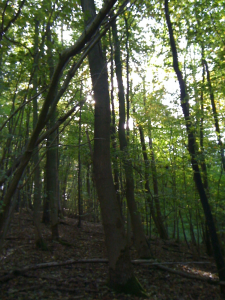 A consortium of experts in timber construction and engineering is exploring ways to boost the use of English hardwood forest products across the built environment, in a move that could significantly improve the carbon footprint of the UK’s buildings and support diverse woodland ecosystems.
A consortium of experts in timber construction and engineering is exploring ways to boost the use of English hardwood forest products across the built environment, in a move that could significantly improve the carbon footprint of the UK’s buildings and support diverse woodland ecosystems.
image: for illustration only – P Badcock
… researchers will examine the suitability of certain species of English homegrown trees…
Forestry Journal writes:
The project – led by the New Model Institute for Technology and Engineering’s (NMITE) Centre for Advanced Timber Technology (CATT) – is funded through the Forestry Commission’s Timber in Construction Innovation Fund, designed to increase the use of the natural carbon sequestering material in the built environment.
Partners also include dRMM Architects, Ecosystems Technologies, Edinburgh Napier University and Built Environment – Smarter Transformation (BE-ST).
For the first time, researchers will examine the suitability of certain species of English homegrown trees for their use in construction, looking at sawn, engineered, and mass timber products including cross-laminated timber (CLT) and glue-laminated timber (glulam). The species will be chosen according to future availability, and timber potential based on existing data, including more common species such as oak, beech and sweet chestnut, as well as birch, sycamore, ash, alder and willow, where existing research about their suitability is limited.
Focussing on the use of timber in modern methods of construction, partners will collate data on the potential strength grading of each species while also assessing the use of homegrown co-products such as wood fibre insulation. The three-year project could help to reduce the UK’s reliance on imported construction materials, as well as providing low-carbon alternatives to concrete and steel.
Kat Scott, sustainability and regenerative design manager at dRMM, said: “By manufacturing viable and scalable homegrown timber alternatives to carbon-intensive materials, we are aiming to reduce the UK’s reliance on imported products. Widening the range of species that provide a domestic wood supply could also provide a boost for localised manufacturing facilities and supply chains.”
